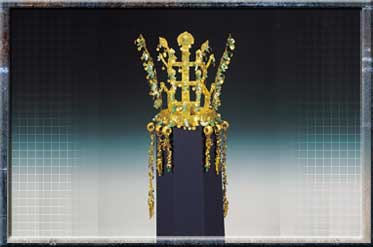
![]()

The Shilla Kingdom originated from the expansionist Saro
Tribe of the Kyongju area, who gradually conquered the neighbouring states
comprising the twelve political entities of Chinhan, distributed in the
area of the Kyongsang-do Province, east of the Naktong River, Following
this expansion thekingdom unified and became ruled by a single monarch.
In the mid 4th century A.D., the then monarch, King Naemul, consolidated
both his royal power and the kingdom, and successive kings undertook further
expansionism. In 562A.D., King Chinhungannexed the Kaya Federation, and
succeeded not only in occupying the Han River area, procuring seaports
for the Shilla Kingdom with direct access to China, but also in advancing
up to the hamgyongnam-do Province in the northeast.
The eventual unification of the Three Kingdoms by the Shilla Kingdom was
greatly influenced by the existence of the military youth corps, called
Hwarang, consisting of the young men of the ruling class; and&nalso
by Buddhism, recognized in the beginning of the 6th century A.D. These
two cultural elements boosted the nationalistic spirit of the Shilla Kingdom
and became twin moral pillars. Inthe 16th year of the reign of King Munmu
in 676, the Shilla Kingdom succeeded in the unification of that part of
the Korean Peninsular, forming a territory extending up to the regions
south to the Taedong River and the Wonsan Bay.In the Kyongju area, large
scale wooden-chamber tombs with stone mounds,were built from the 4th century
A.D. to the first half of the 6th century A.D.